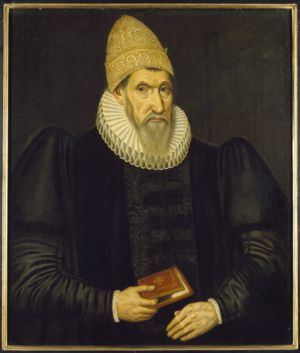
A portrait of Richard Napier by an unknown painter, c 1630. Oil on canvas, 76 × 64 cm. WA1898.19.
© Ashmolean Museum, University of Oxford
Richard Napier would be regarded by history as a dour clergyman who spent forty years quietly tending his Buckinghamshire flock had he not, for reasons that remain opaque, decided to learn the art of astrological physic from Simon Forman and succeeded in establishing himself as one of the great healers of his time.
He was born in Exeter on 4 May 1559. Like his father and brother, he was commonly referred to as ‘Sandy’ instead of Napier. In 1577, at the age of eighteen, he matriculated at Exeter College, University of Oxford, where he studied theology. He was admitted as a Fellow of the college in 1580 and took a BA in 1584 and an MA in 1586. In 1590 he was ordained and installed as a rector in Great Linford, Buckinghamshire, where he would stay for the rest of his life. He was by his own account a nervous preacher (MS Ashmole 213, f. 110r), and he employed a series of curates to deliver sermons in his place.
If theology was Napier’s occupation, astrology was his calling. He first consulted Forman in 1597 (with an enquiry about stolen goods and, soon afterwards, another about melancholy) and soon became the famous astrologer’s protégé. The two corresponded regularly, though few of their letters survive. Napier asked Forman for advice about difficult cases and alchemical and magical practices. Forman included herbs and recipes in his replies. Napier reciprocated with books and food, tokens of his appreciation and acknowledgment of his debt to his mentor. Forman regularly stayed with Napier in Buckinghamshire, and Napier called on Forman when he visited his brother, Robert, in London. Robert, a thriving merchant, also consulted Forman. When Forman died in 1611, he left his books and papers to Napier. In the decades that followed, Napier had some contact with Forman’s widow and his son, Clement.
Napier’s casebooks survive from 1597 until his death in 1634. Through them and his other papers (all unpublished prior to the Casebooks Project), we can see his studious devotion to astrology, alchemy, various sorts of magic, and theology. Most of his patients were local. Through his brother, his repute spread amongst members of the nobility, including those in the circle of the duke of Buckingham. Napier was consulted about the duke’s ‘lunatic’ brother, Viscount Purbeck, John Villiers.
Napier’s methods, like Forman’s, were resolutely astrological. But unlike Forman, he brought his fluency with the realms of the spiritual and divine to bear on his practice. He seems to have had a special affinity for cases of madness. He shared his collection of books and manuscripts with clergymen and aspiring astrologers, and we can only imagine the conversations held over dinner at the bucolic rectory when such men travelled to work in his study or borrow his books. To the astrologer’s repertoire of propitiously timed purges, bloodlettings, strong waters, and the occasional amulet, he added prayer and exorcism. His combination of priestcraft and physic was controversial, but, unlike Forman, he was never subjected to sanctions by the authorities, nor was his reputation sullied by court scandal or the popular press.
He died while at prayer in 1634. His intellectual and financial heir was his nephew, Sir Richard Napier (1607–76). Sir Richard left his books and papers to his son Thomas, who sold them to Elias Ashmole. Most of Richard Napier’s papers are preserved in the Ashmole Collection in the Bodleian Library, Oxford.
For full biographical details, see the entry in the Oxford Dictionary of National Biography and our Further reading page.


